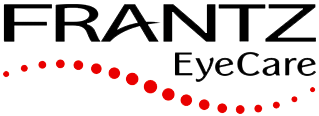Fort Myers/Naples – – A new national health survey of 1,200 Americans conducted for the American Academy of Ophthalmology finds that most Americans are unaware of the risks associated with age-related eye diseases, despite a projected 65 percent spike in those conditions by the year 2020. The survey indicates that few Americans see themselves truly at risk for eye disease and that populations most at risk for developing eye disease are unaware of the factors that make them susceptible. Overall, most Americans rank blindness and vision loss relatively low on their list of health concerns.
The survey, conducted by Greenberg Quinlan Rosner Research, finds only 11 percent of Americans perceive themselves at high risk for eye disease.[i] While Americans age 65 and over are the most at-risk population for eye disease, only 10 percent believe they are personally at risk and more than a third of those in this age group do not even get annual eye examinations. Another high-risk group, those with a family history of eye disease, knows strikingly little about specific risk factors and is no more likely to get screened than people without a family history of eye disease. Only 15 percent of all respondents were correctly able to identify half or more factors from a list of risk factors for age-related macular degeneration, cataracts, diabetic retinopathy, glaucoma and dry eye presented in the survey.
Age-related eye diseases including cataracts, diabetic retinopathy, glaucoma and age-related macular degeneration are expected to dramatically increase—from 28 million today to 43 million by the year 2020.[ii] Left untreated, these diseases can cause serious vision loss and blindness. At the heart of this upsurge lie America’s 78 million baby boomers, who will increasingly face the effects of eye diseases as they get older. Despite these statistics, Americans remain relatively unconcerned about vision loss. The Academy’s survey reveals that less than a quarter of Americans (23 percent) are very concerned about losing their vision, while a majority feel weight gain or joint and back pain are of greater concern than vision loss.
“The stark reality is that millions of people will suffer significant vision loss and blindness because they don’t know the risks,” said local ophthalmologist Jonathan M. Frantz, MD, FACS. “We’re taking action against this pending epidemic by educating the American public on the steps they can take to prevent vision loss and blindness.”
To that end, the Academy, the world’s largest association of eye physicians and surgeons, is issuing a new eye disease screening recommendation for aging adults and is launching a new public initiative called EyeSmart™ to educate Americans about the risks they face.
The Academy now recommends that adults with no signs or risk factors for eye disease get a baseline eye disease screening at age 40—the time when early signs of disease and changes in vision may start to occur. Based on the results of the initial screening, an ophthalmologist will prescribe the necessary intervals for follow-up exams. For individuals at any age with symptoms of or at risk for eye disease, such as those with a family history of eye disease, diabetes or high blood pressure, the Academy recommends that individuals see their ophthalmologist to determine how frequently their eyes should be examined.
“Much like regular mammograms and diabetes screenings, eye disease screening will help identify signs of disease at an early stage, when many treatments can have the greatest impact,” said Dr. Frantz.
The new recommendation does not replace regular visits to the ophthalmologist to treat ongoing disease or injuries, or vision examinations for eyeglasses or contact lenses.
EyeSmart will support the Academy’s new eye health recommendations by empowering individuals and families to take charge of their eye health. The Academy is partnering with EyeCare America®, a public service program of the Foundation of the American Academy of Ophthalmology, on the effort.
“With EyeSmart, age-related eye disease will no longer be a question mark in the minds of the American public,” said H. Dunbar Hoskins Jr., MD, executive vice president of the American Academy of Ophthalmology. “The campaign allows all Americans to get informed about age-related eye disease, understand their risks and take action.”
EyeSmart draws upon the combined resources of the Academy, state and local ophthalmology societies and other partners to deliver critical information on age-related eye diseases through multiple health information channels, including doctors’ offices and grassroots networks. The EyeSmart Web site, www.geteyesmart.org, delivers eye disease and risk information and a searchable database of local ophthalmologists.
In order to impact the chief health care decision makers of American families, EyeSmart will focus on reaching women over 40. These women are more likely to serve as caregivers for their own families and increasingly their aging parents, and they frequently act upon and share with friends and loved ones positive health care information.
EyeSmart also aims to reach people who don’t traditionally consider themselves at risk, such as individuals who do not wear glasses or contacts. The survey revealed that 96 percent of individuals without glasses or contacts do not think they are at high risk for eye disease. Wearing glasses or contacts has no impact on contracting age-related eye diseases.
“The fact is that everyone is at risk. More than half of all Americans will have some form of eye disease as they get older,” Dr. Hoskins said. “We believe that if Americans know their risks, they will take the steps necessary to maintain good eye health. We want Americans to get EyeSmart to help reduce severe vision loss and blindness.”
For an executive summary of the survey and more information on specific age-related eye diseases, visit www.geteyesmart.org.
Jonathan M. Frantz, MD, is medical director of Florida Eye Health and one of Southwest Florida’s leading cataract and LASIK surgeons. He has offices in Fort Myers, Cape Coral, Punta Gorda and Naples. A fifth office will open in Lehigh Acres later this fall. To reach Florida Eye Health, call (239) 418-0999 or visit www.bettervision.net.
##
[i] Americans, Eye Health, and Eye Disease National Survey, Greenberg, Quinlan & Rosner Research Inc., June, 2007. Telephone survey of 1,200 adults. Margin of error +/- 2.8 percentage points. [ii] The Eye Disease Prevalence Research Group, Cause and Prevalence of Visual Impairment Among Adults in the United States, Archives in Ophthalmology 2004;122;477-485.


